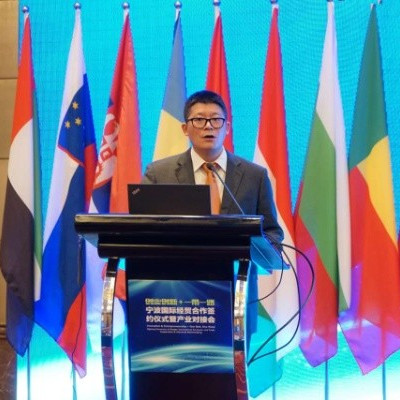Romania is not well known in China, this company wants to change that

BRAND STORY – Romania is one of the countries with a gateway on the Middle Corridor. In the port of Constanta, cargo from the east is further distributed in Europe. The potential of Romania is not very well known in China, where the regular route via Poland and Belarus is still preferred. But this Chinese logistics firm nevertheless signed an agreement with the largest railway company in Romania, to explore what it can bring to the industry.
In December, TIEDADA Supply Chain Management Co and GRAMPET GROUP signed an agreement to jointly develop the new route of the China-Europe Railway Express(CR Express). The first multimodal route would be from China to Bucharest via the northern route, but eventually the parties want to explore the multimodal route via the Black Sea. We talked with Frank Shao, CEO of TIEDADA and asked him why he believes in the route on the Middle Corridor.

Romania was incorporated in the Trans-Caspian Corridor in 2018. Where are we now?
After the war broke out last year, Romania found business opportunities from the crisis. Since then, they wanted to change the status quo of the Middle Corridor. They also really wanted to establish a long-term and stable strategic cooperative relationship with Chinese railway freight forwarders and participate in the future business opportunity in Southeast Europe.
How familiar is the Chinese logistics industry with the option of going through Constanta?
Chinese freight forwarders and shippers are not familiar with the port of Constanta for entering the EU. However, Tietada believes that the port of Constanta is a good choice to effectively radiate to Central and Eastern Europe. It is close to the countries such as Hungary, Bulgaria and Serbia, as well as a good transit port for traffic to and from Ukraine. It has a broad future.
What are the benefits of using the port of Constanta as a gateway to Europe for Chinese traffic?
Last year, the transit through Turkey accounted for a large proportion of the delays on the Middle Corridor. The direct route from the ports of Batumi and Poti in Azerbaijan to the Port of Constanta can bypass the tedious process of land transportation and effectively guarantee good transit times.
The Port of Constanta has also been criticised a lot. There has been a lot of congestion, and the railway network is not up to the highest standards. What can you say about the situation today?
There is still no obvious change in this situation, but we have to continue to build this alternative and make it viable. The price of shipping is the biggest obstacle to this route at the moment, but I think the route from China to Central and Eastern Europe will also have a lot of vitality in the long run.
What remains to be done to maximise the potential of Romania on the corridor?
1. Focus on the transportation capacity along the route, especially the capacity of ships in the Caspian Sea
2. Focus on the integration of customs documents and customs affairs. The Northern Route, which spans multiple countries, remains efficient thanks to the customs agreement that integrates customs clearance
3. Consensus of countries along the route. The establishment of the Middle Corridor requires the support and policy inclination of all countries, as well as the contribution of a strong regional alliance
4. Schengen status for Romania. Once this is established, the transport of goods through Romania into Europe will be more efficient, and the volumes will grow





